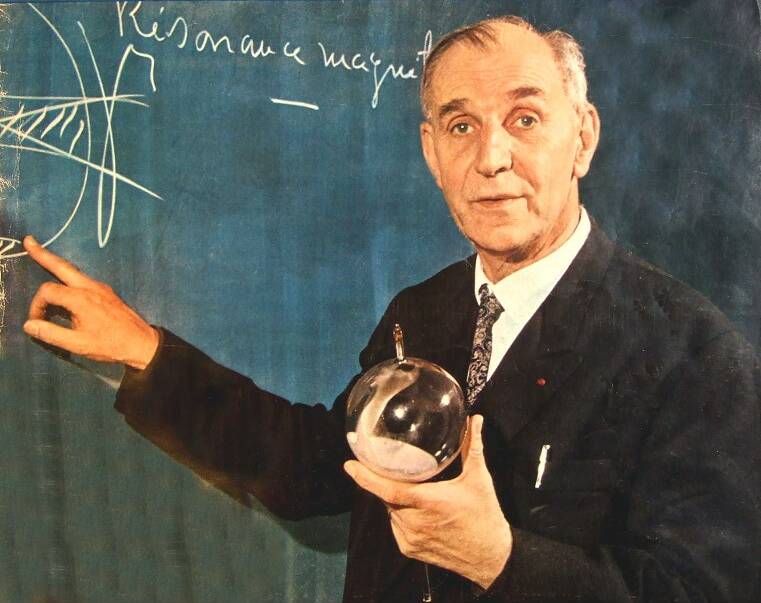- Home
- Laboratory
- Presentation
- History of the Laboratoire Kastler Brossel
- Birth of double resonance and optical pumping
Birth of double resonance and optical pumping

During his years in the USA, Jean Brossel maintained regular correspondence with his professor, Alfred Kastler. These exchanges of ideas led to the concept of double resonance experiments (optical and radiofrequency), which they published together in 1949 in the Comptes Rendus de l’Académie des Sciences. The first experimental verification, conducted on mercury atoms, was carried out at MIT by Jean Brossel and Paul Sagalyn under the supervision of Francis Bitter and was published in 1950 in the Physical Review.
In 1951, Jean Brossel brought back the results obtained at MIT regarding the observation of magnetic resonance (radiofrequency) between Zeeman sublevels of an optically excited mercury state. These findings allowed him to defend his French doctoral thesis in December 1951, a date that might be considered the official founding of the laboratory. However, as early as October 1951, he had already taken on the responsibility of supervising a new student, Jacques Winter, for the academic year. These students, then called “diplomitifs,” were preparing a “diplôme d’études supérieures” between the bachelor’s degree and the agrégation, before the introduction of third-cycle doctorates and master’s degrees.
The project involved designing a new atomic beam apparatus using sodium to observe optical pumping. Following the developments in double resonance, Kastler had proposed in 1950 in the Journal de Physique a generalization, for ground states of atoms, of the possibilities offered by double resonance for excited states. Based on the conservation of angular momentum in interactions between atoms and circularly polarized light, this new method, which he named “optical pumping,” was rooted in his 1936 doctoral research. The first attempts to observe the phenomenon failed, likely due to imperfect light irradiation or rapid relaxation caused by collisions.
Thanks to this new atomic beam, in August 1952, Jean Brossel successfully made the first observation of the phenomenon, published in December 1952 in the Journal de Physique. The following year, he added a radiofrequency loop to the atomic beam with the help of a new student (diplomitif), Bernard Cagnac. By using high-power microwave generators purchased by Yves Rocard from American military surplus, the first optical observation of magnetic resonance in a ground atomic state was achieved, particularly revealing multi-quantum radiofrequency transitions between Zeeman sublevels of this ground state. Simultaneously, P. Kusch observed similar transitions in potassium using Rabi’s method at Columbia University, although the first multi-quantum transitions had been observed as early as 1950 by Hughes and Grabner in a different type of transition.
The atomic beam apparatus was installed in the basement of the Rue Lhomond building, in the former spectroscope room of Bruhat, cluttered with its circular concrete base, independently founded from the building. Brossel did not abandon the idea of attempting optical pumping observations in vapor cells, which were more compact than the atomic beam apparatus. This task was taken up by the next “diplomitifs”: in 1954, Jean-Pierre Barrat made the first observation in large-diameter cells (15 cm, allowing atoms time to orient between successive wall collisions), and in 1955, Jean Margerie demonstrated, using hydrogen, the effectiveness of buffer gases, which, through gentle, non-disorienting collisions, delayed the more disruptive wall collisions within the cell.
